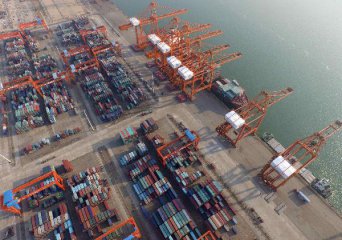
Australia's agriculture sector have received an early Christmas present on news the first round of Chinese import tariffs will be cut on Dec. 20 when the China-Australia Free Trade Agreement comes into force.
Signed in June, both countries have exchanged the agreement's enacting letters which is expected to drive up trade worth now 100 billion Australian dollars (72 billion U.S. dollars) annually, cutting import tariffs on wide ranging products including agriculture and financial services needed to service a rising middle class.
The first round of tariff cuts will happen on Dec. 20, with a second cut to take effect from Jan. 1 2016, helping improve the competitiveness of the nation's produce into China amid stiff competition, Australia's agriculture minister Barnaby Joyce said on Wednesday. "The China-Australia FTA will also close the gap between Australia and those countries that already have FTAs with China, such as New Zealand and Chile, and provides a significant advantage over other major competitors in the market which do not have FTAs with China," Joyce said in a statement.
The first year of tariff cuts is worth 400 million Australian dollars (288 million U.S. dollars) to the local agriculture industry, the National Farmers Federation have said. Despite the China-Australia FTA being signed in June, the implementation of the agreement has had a rocky path into implementation by local political campaigns that have been labelled as xenophobic, risking the future growth of the struggling economy.
Australia is undergoing one of its most significant economic transitions as the commodities boom comes to a halt, helped by a low Australian dollar and strengthening business and consumer sentiment, tailoring exports to capitalize on the rising Asian middle class.
"Now the (China-Australia FTA) has come into effect, it's time to get on with the job," Professor James Laurenceson, economist and deputy directory of the Australia-China Relations Institute, told Xinhua. "(Australia is) still far better off being exposed to a Chinese economy growing at around 7 percent than OECD economies growing at 2 percent." Australia's agriculture industry has been the bright spot of the local export economy, up 11.4 percent year on year despite a 4.1 percent decline in goods exports, dragged by falling iron ore which led to Australia's trade deficit blowing out to 3.3 billion Australian dollars in October, according to official figures released last week.




















Latest comments